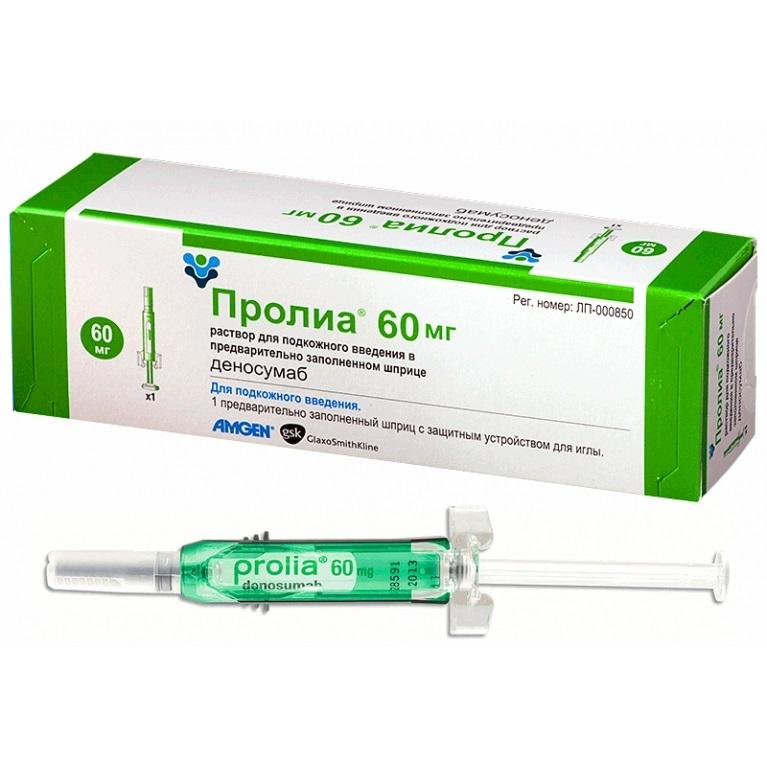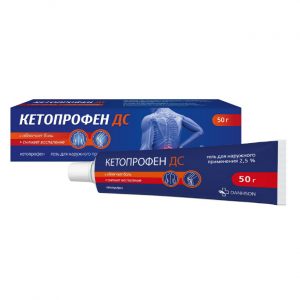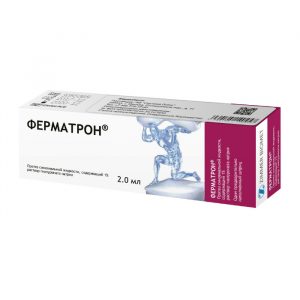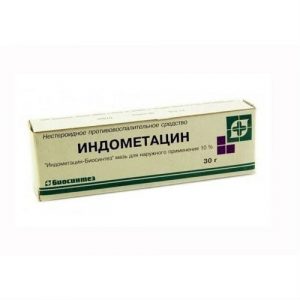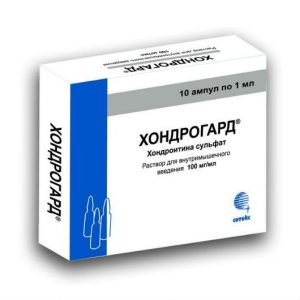Description
Release form
Subcutaneous solution.
Packaging
1 pc
Pharmacological action of
Denosumab is a fully human monoclonal antibody (IgG2) that has high affinity and specificity for the Kappa B nuclear factor activator receptor ligand (RANKL) and thereby inhibits the activation of the only RANKL receptor, the nuclear factor kB (RANK) activator on the surface of osteoclasts and their predecessors. Thus, preventing the interaction of RANKL / RANK inhibits the formation, activation, and longevity of osteoclasts. As a result, denosumab reduces bone resorption and increases the mass and strength of the cortical and trabecular layers of the bone.
Pharmacodynamic effects:
Administration of denosumab at a dose of 60 mg resulted in a rapid decrease in serum concentrations of the bone resorption marker, 1C-telopeptide (CTX), by approximately 70% within 6 hours after sc administration and approximately 85% over the next 3 days. The decrease in CTX concentration remained stable in the 6-month interval between dosing. The rate of decrease in serum CTX concentration partially decreased with a decrease in serum denosumab concentration, which reflects the reversibility of the effect of denosumab on bone remodeling.
These effects were observed throughout the course of treatment. According to the physiological relationship of the processes of formation and resorption during bone remodeling, a decrease in the content of bone formation markers was observed (for example, bone-specific alkaline phosphatase and serum N-terminal type 1 collagen propeptide) from the first month after the first dose of denosumab.
Markers of bone remodeling (markers of bone formation and bone resorption), as a rule, reached concentrations of the period before treatment no later than 9 months after taking the last dose of the drug. After resuming treatment with denosumab, the degree of decrease in CTX concentrations was similar to the degree of decrease in CTX concentrations at the beginning of treatment with denosumab.
It has been shown that the transfer from treatment with alendronic acid (average duration of use is 3 years) to denosumab leads to an additional decrease in serum CTX concentration compared with a group of postmenopausal women with low bone mass who continued treatment with alendronic acid. At the same time, changes in serum calcium were the same in both groups.
In experimental studies, inhibition of RANK / RANKL simultaneously with the binding of osteoprotegerin to the Fc-fragment (OPG-Fc), led to a slowdown in bone growth and impaired dentition. Therefore, treatment with denosumab can inhibit bone growth with open growth areas in children and lead to eruption of teeth.
Immunogenicity:
Denosumab is a human monoclonal antibody, therefore, as with other drugs of a protein nature, there is a theoretical risk of immunogenicity. More than 13,000 patients were examined for the formation of binding antibodies using the method of sensitive electrochemiluminescence in combination with immunological analysis. Less than 1% of patients taking denosumab for 5 years, antibodies were determined (including preexisting, transient and growing). Seropositive patients were further examined for the formation of neutralizing antibodies using chemiluminescent analysis in an in vitro cell culture, neutralizing antibodies were not detected. No changes in the pharmacokinetic profile, toxic profile, or clinical response due to antibody formation were detected.
Clinical efficacy of
Treatment of postmenopausal osteoporosis
In women with postmenopausal osteoporosis, Prolia increases bone mineral density (BMD), reduces the incidence of femoral neck fractures, vertebral and non-vertebral fractures. The effectiveness and safety of denosumab in the treatment of postmenopausal osteoporosis has been proven in a study lasting 3 years.
The results of the study show that denosumab significantly, in comparison with placebo, reduces the risk of vertebral and non-vertebral fractures, femoral neck fractures in women with postmenopausal osteoporosis. The study included 7808 women, of whom 23% had frequent vertebral fractures. All three endpoints of effectiveness in fracture relationships reached statistically significant values, evaluated according to a predefined sequential testing scheme.
The reduction in the risk of new vertebral fractures with Denosumab for more than 3 years remained stable and significant. The risk was reduced regardless of the 10-year probability of major osteoporotic fractures. The risk reduction was also not affected by the presence of frequently occurring vertebral fractures, non-vertebral fractures, age, patients, BMD, level of bone remodeling and previous therapy for osteoporosis.
In women over 75 in postmenopausal women, denosumab reduced the incidence of new vertebral fractures and, according to post hoc analysis, reduced the incidence of femoral neck fractures.
A decrease in the incidence of non-vertebral fractures was observed regardless of the 10-year probability of large osteoporotic fractures.
Denosumab significantly increased BMD in all anatomical areas compared with placebo. BMD was determined 1 year, 2 and 3 years after the start of therapy. A similar effect on BMD was noted in the lumbar spine regardless of age, race, body mass index (BMI), BMD and bone remodeling.
Histological studies confirmed normal bone architectonics and, as expected, reduced bone remodeling compared to placebo. No pathological changes were noted, including fibrosis, osteomalacia and violation of the architectonics of bone tissue.
Clinical efficacy in the treatment of bone loss caused by hormone deprivation therapy or aromatase inhibitor therapy:
Treatment of bone loss caused by androgen deprivation:
Denosumab has been shown to be effective and safe in treating bone loss associated with a decrease in androgen concentration in 3 A summer study of 1,468 patients with non-metastatic prostate cancer.
A significant increase in BMD was determined in the lumbar spine, the entire femur, the neck of the femur, spit of the femur 1 month after taking the first dose. The increase in BMD in the lumbar spine did not depend on age, race, geographic region, BMI, initial BMD, bone remodeling, the duration of hormone-deprivation therapy, and a history of vertebral fracture.
Denosumab significantly reduced the risk of new vertebral fractures over 3 years of use. Risk reduction was observed after 1 year and 2 years after the start of therapy. Denosumab also reduced the risk of more than one osteoporotic fracture of any location.
Treatment for bone loss in women receiving aromatase inhibitor therapy for breast cancer
Efficacy and safety of denosumab in the treatment of bone loss, induced by adjuvant aromatase inhibitor therapy was evaluated in a 2-year study involving 252 patients with non-metastatic breast cancer.
Denosumab significantly increased BMD in all anatomical areas, compared with placebo, for 2 years. An increase in BMD was observed in the lumbar spine a month after taking the first dose. A positive effect on BMD in the lumbar spine was noted regardless of age, duration of treatment with an aromatase inhibitor, BMI, previous chemotherapy, previous use of a selective estrogen receptor modulator (SMRE), and time elapsed from the onset of menopause.
Indications
– treatment for postmenopausal osteoporosis
– treatment for bone loss in women receiving therapy with aromatase inhibitors for breast cancer and in men with prostate cancer receiving hormone deprivation therapy.
Contraindications
– hypocalcemia
– any sensitivity.
Use during pregnancy and lactation
There are no data on the use of the drug during pregnancy. Shedding is not recommended for use in pregnant women.
In toxicological studies on lower primates, it was shown that at doses 100 times higher than recommended for clinical use, denosumab did not affect fertility or fetal development.
Experiments in mice with the gene turned off showed that the absence of RANKL can lead to impaired development of lymph nodes in the fetus, and in the postnatal period can be a cause of disturbance in teething, and bone growth can also affect the maturation of the mammary gland, which can lead to a weakening of lactation.
It is not known whether denosumab is excreted in breast milk. Since it is known that potentially denosumab can cause unwanted reactions in infants, it is necessary either to stop breastfeeding or to discontinue the drug Prolia.
Special instructions
Recommended intake of calcium and vitamin D during the use of the drug Prolia.
Hypocalcemia can be corrected with adequate calcium and vitamin D supplements before starting denosumab therapy. It is recommended to control the concentration of calcium in patients predisposed to hypocalcemia.
Patients receiving Prolia may develop infections of the skin and its appendages (mainly inflammation of the subcutaneous tissue), in some cases requiring hospitalization. Such reactions were more often reported for the denosumab group (0.4%) than the placebo group (0.1%). Moreover, the overall incidence of skin infections is comparable in the denosumab and placebo groups. Patients should be instructed to seek medical attention immediately if symptoms and signs of inflammation of the subcutaneous tissue develop.
In patients with advanced cancer who received 120 mg of denosumab every 4 weeks, cases of jaw osteonecrosis were reported. There are separate reports of the development of jaw osteonecrosis at a dose of 60 mg every 6 months.
Persons allergic to latex should not touch the rubber cap of the needle (latex derivative).
Influence on the ability to drive vehicles and control mechanisms:
Studies of the effects of Prolia on the ability to drive vehicles and control mechanisms have not been conducted.
Composition
1 syringe:
– denosumab 60 mg
Excipients:
sorbitol (E420) 47 mg,
glacial acetic acid 1 mg,
sodium hydroxide to pH 5.0 – 5.5,
half a and up to 1 ml.
Dosage and administration of
Introduction: The injection of the drug requires prior training – see the recommendations for the administration of the drug at the end of this instruction
Recommended dose of the drug Prolia – one sc injection 60 mg every 6 months. During the course of treatment, it is recommended to take calcium and vitamin D. supplements additionally.
Children:
The drug Prolia is not recommended for use in pediatrics, since the effectiveness and safety of this drug have not been studied in this age group.
Elderly patients:
Based on the available data on the efficacy and safety of the drug in this age group, correction of the dosage regimen of the drug is not required.
Renal failure: Based on the available data on the effectiveness and safety of the drug in this group of patients, correction of the dosage regimen of the drug is not required.
In patients with severe renal failure (creatinine clearance Hepatic insufficiency: Efficacy and safety have not been studied.
Instructions for use:
The solution should be evaluated before administration for inclusion or discoloration. The solution should not be used for clouding or discoloration. Do not shake.
To avoid discomfort at the injection site, Prolya solution should be warmed to room temperature (up to 25 ° C) before injection, and then slowly fill in all the contents before filling syringe syringe with the rest of the drug discard.
Any quantities of unused drug or unused materials must be disposed of in accordance with local requirements
Side effects
Data obtained from controlled use in clinical trials.
Adverse reactions are reported by organ system classes in terms of the Medical Regulatory Activity Dictionary (MedDRA).
The frequency of adverse events was classified as follows: very often (? 1/10), often (? 1/100,
In each group of organ systems and frequency of messages, unwanted reactions are listed in decreasing order of severity.
Organ system class Frequency Adverse reaction
Infections and infestations Infrequent inflammation of the subcutaneous tissue
Metabolism and electrolyte metabolism Very rarely hypocalcemia
Visual organ cataract Frequently cataract in men receiving androgen deprivation therapy for prostate cancer srdlp skin subcutaneous fat infrequently eczema, including dermatitis, allergic dermatitis, atopic dermatitis, contact dermatitis
From the side of the musculoskeletal system and connective tissue Often
Rarely Pain in the extremities
Osteonecrosis of the jaw
Drug Interactions
No drug interaction studies have been conducted.
The drug should not be mixed with other medicines.
overdose
In clinical studies, no cases of overdose of the drug Prolia were noted.
Denosumab doses up to 180> mg every 4 weeks (cumulative dose up to 1080 mg every 6 months) were administered in clinical trials.
Deystvuyuschee substances
Denosumab
Disposable conditions from
pharmacies Prescription
Form of Treatment
simply entails dlya inaektsiy
Menyufekchuring Amgen Limited, USA
